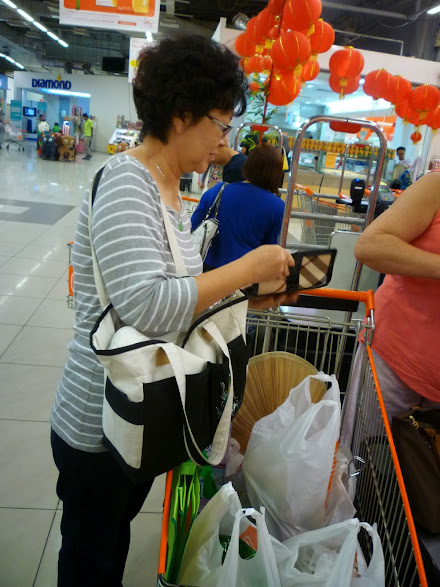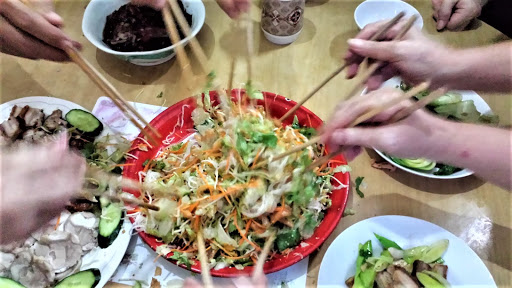Promotional material is normally rare in our housing estate. Yesterday, I saw this advertisement hung at one of the road junctions in our housing estate - tuition teacher is available to come to the house to conduct tuition. These days when tuition centres are popping up all over the place where parents or carers have to send and pick up the kids, this may sound attractive to some!
I had done a variety of works in my younger days. I have talked about one of them - odd job worker in graveyard construction and tombstone restoration in Chapter 14. I had also worked as tuition teacher when I was an A-Level student and during the post-A Level period before I went to the university. Those were all part-time works to earn extra pocket money.
******************************
I had gone to student's home doing one-to-one tuition. I had also coached group of students. Since I did not have a tuition centre and my old house was just not suitable for such purpose, I started using the library of the British Council at KK Town centre as my tuition centre. It started well initially when the staff and library users just considered us to be a group of students doing group study and revision. However, when the staff observed the frequency of our visits and the occasional loud noises emitting from the "study", we were gently advised either to cut down the talking or move to other place. At the end, I had no choice but asked one of the students to use his house as the tuition centre. His house was one among the rows of stilted houses in Kampong Air (Water Village) - the sea had since been reclaimed and now occupied by Asia City.
******************************
Work which I did and considered "prestigious" was when I worked in Radio Television Malaysia (RTM) as a part time Hakka news reader in 1972 to early 1973. I had to go through an audition to check my voice quality before final acceptance by the producer. News could not be pre-taped, it had to be read live. This was very stressful in the beginning and I had to read the text a few times to make sure I knew every word before I read it live at the designated time slot. The news was translated from English to Chinese for Mandarin reading. I had to read the same text but in Hakka. It was not easy as some of the words would not sound right if read in Hakka. Many times, I had to quickly come up with the correct equivalent in Hakka in the very short time I had. I was paid RM7.50 for each 10-minute session.
 |
| Letter from Radio Malaysia asking for a voice test. |
 |
| A payment voucher for payment of RM22.50 for three sessions done in March 1972. |
******************************
When I took up the part time job as a news reader, my full time work then was working as a draftsman in PWD. PWD office was in the Jesselton town centre (now renamed Kota Kinabalu) in a building now occupied by the Chartered Bank. Once the office hours ended at 4.15 pm, I had to rush off to take a bus that plied the Tuaran Road to go to the RTM station which currently is next to Komplek Karamunsing. If I was lucky, I would reach the station around 5.00 pm leaving just about half an hour to be familiar with the text to be read live at 5.30 pm sharp. At one time, I could not make it in time to read the news and the slot was replaced by light music. The next day, I received a call from the producer who was obviously crossed and did not hesitate to give me a piece of his mind. I was asked to write a report to explain why I did not turn up to read the news. It's a serious matter if the air went blank without the usual news being read!
The news reading always began with "This is Radio Malaysia Sabah, this is news time by Lee Teck Kiong....". Though my job as a part time news reader was a short one, many among the local Hakka populace still recall the name of this reader because they had heard me reading news before. Many Chinese liked to listen to the news read in their mother tongue in those days.
My job as a draftsman was a short one as well. I was working in the Structural Section at PWD Hqs. This experience proved to be very useful when I did my third year university design project when I needed to complete the structural design of a building followed by the drafting work.
The news reading always began with "This is Radio Malaysia Sabah, this is news time by Lee Teck Kiong....". Though my job as a part time news reader was a short one, many among the local Hakka populace still recall the name of this reader because they had heard me reading news before. Many Chinese liked to listen to the news read in their mother tongue in those days.
Technical Pens & Lettering Guides
The initial period of the draftsman's job was not so glamorous liked the news reader. For the whole first week as a trainee draftsman, I as a freshie had to practice hand writing skill on alphabets, numbers and words in pages and pages of papers using the technical pen. Next, I was asked to learn to trace words and sentences using the Rotring Lettering Guides. When my boss was finally sufficiently satisfied with the hand writing, I was only then given the task of amending old drawings. My job as a draftsman ended when I left KK to pursue a degree course in Civil Engineering in April 1973 at the Malaya University.
These days, good hand writing skill is no longer a requirement for draftsman. With all drafting work done by computers, you will be labelled a "have been" if you try to sell your drafting credential based on your good writing skill! As far as technical pens and lettering guides, they are all museum items now!
These days, good hand writing skill is no longer a requirement for draftsman. With all drafting work done by computers, you will be labelled a "have been" if you try to sell your drafting credential based on your good writing skill! As far as technical pens and lettering guides, they are all museum items now!

































.jpeg)





























